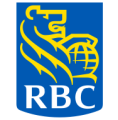Royal Bank of Canada Management Proxy Circular now available
The Circular contains information about the RBC annual meeting, scheduled to take place on
The Circular also provides disclosure about changes and features of compensation programs for employees and senior executives. These programs demonstrate RBC's ongoing leadership in corporate governance, and the alignment of our compensation programs with risk management principles, shareholders' interests and best practices. The key items include:
- A detailed description and explanation of compensation programs in
2009 for RBC President and CEO Gordon M. Nixon, RBC Chief
Administration Officer and Chief Financial Officer Janice Fukakusa
and three highest paid executive officers;
- An evaluation of 2009 performance and compensation decisions for the
CEO. Nixon's total direct compensation was $10.4 million in 2009. All
of his variable compensation valued at $9 million was paid through
deferred equity-based awards with a minimum three-year deferral
period. No cash bonus was paid in 2009.
- Charts showing share ownership requirements and actual share holdings
for named executive officers. The CEO is required to hold RBC shares
valued at no less than eight times his base salary. Nixon holds
shares valued in excess of 38 times his salary.
- A chart showing named executive officer compensation, including the
proportion of pay at-risk and deferred performance-based pay. For all
other named executive officers, between 66 per cent and 78 per cent
of performance-based pay was deferred through equity based awards.
- A new format three-year summary compensation table, which shows
Nixon's compensation for 2009, 2008 and 2007. This chart includes
equity awards of $4,950,000 awarded to Nixon for 2008, which he
subsequently made a personal decision to forego.
- A chart showing the change in compensation for the CEO and other
named executive officers compared to the change in total shareholder
returns (TSR) over the past five years. During the period, TSR grew
at an annualized rate of 15.7 per cent, while compensation for the
named executive officers grew by an annualized rate of 12.8 per cent,
reflecting RBC's pay-for-performance philosophy.
- A description of changes made in 2009 to compensation program design
and compensation governance practices to strengthen compensation risk
management.
- An explanation of changes to senior executive compensation programs
in effect for 2010.
In 2009, RBC worked with the Canadian Coalition for Good Governance (CCGG) and the Mouvement d'éducation et de défense des actionnaires to implement a non-binding advisory vote by shareholders on RBC's approach to executive compensation. As a result, the Circular includes a recommendation from the RBC Board of Directors that shareholders approve an advisory resolution that would accept the approach to executive compensation disclosed in the document.
Separately, RBC has provided on its website a summary of its approach to compensation, in line with best practice recommendations of the CCGG.
For further information: Investors: Josie Merenda, Investor Relations, RBC, (416) 955-7803, [email protected]; Media: Gillian McArdle, Media Relations, RBC, (416) 974-5506, [email protected]

Share this article